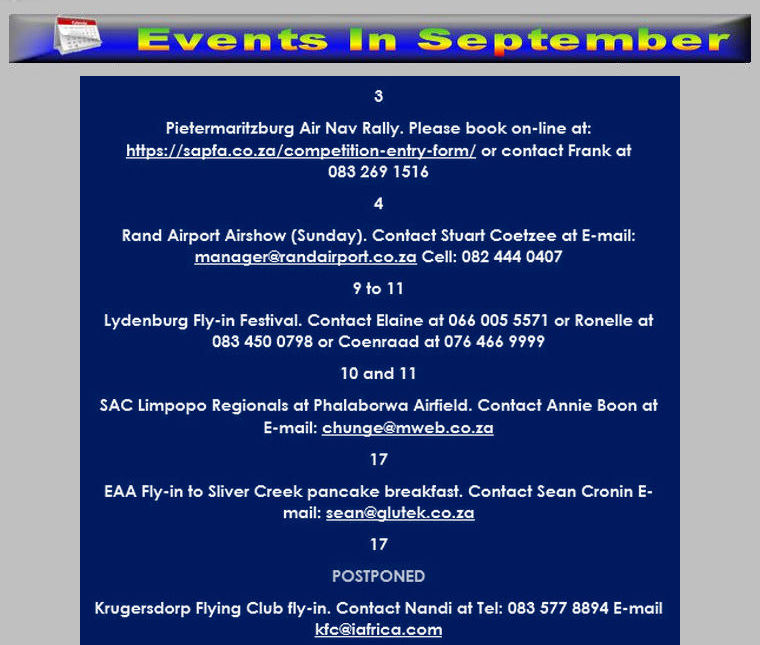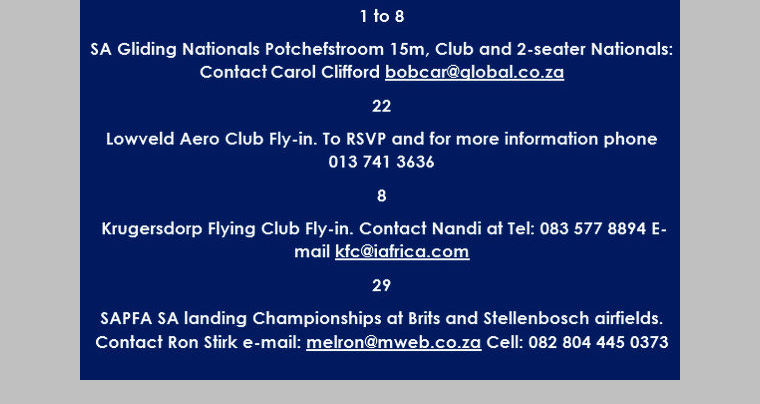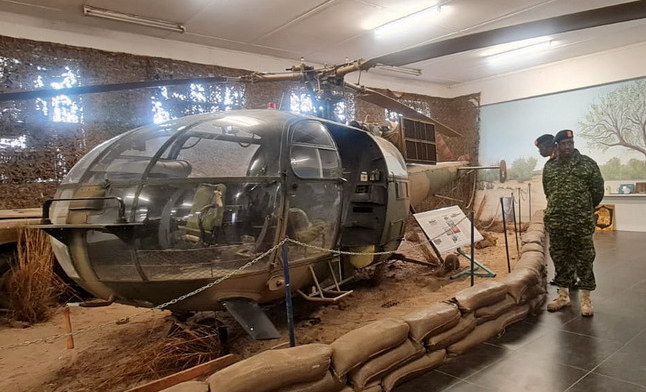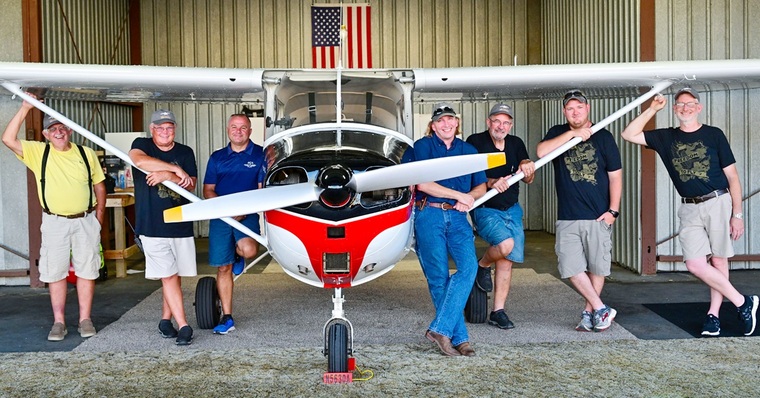







































MIDWEEK UPDATE 18 AUGUST 2022
Google Banner Ad












VOLKSWAGEN GROUP CHINA UNVEILS PASSENGER DRONE PROTOTYPE

Volkswagen Group China has unveiled its first electric vertical take-off and landing (eVTOL) passenger drone prototype, as part of its strategy to explore and break new ground in fully electric and sustainable individual mobility concepts. In 2020, Volkswagen Group China launched a Vertical Mobility project to explore the next generation of mobility solutions, including the urban air mobility market and the extension of urban traffic into airspace.
After intensive research, conceptual work, and development, the project team has now developed its first validation model - the V.MO. This initial prototype has also been nicknamed the "Flying Tiger" due to its distinctive black and gold livery, which was painted to commemorate its launch in the Year of the Tiger.
The prototype concept is based on existing autonomous driving solutions and battery technology for emission-free mobility. With a luxury x-wing configuration of 11.2m in length and a span width of 10.6m, the model features eight rotors for vertical lift and two propellers for horizontal flight. The Group will conduct several flight tests later this year to optimise the concept and an improved prototype will undergo further advanced test flights by late summer 2023. In its final future iteration, the fully electric and automated eVTOL could eventually carry four passengers plus luggage over a distance of up to 200km.
Dr. Stephan Wöllenstein, CEO of Volkswagen Group China, said: "Through this pilot project, we are bringing Volkswagen's long tradition of precision engineering, design, and innovation to the next level, by developing a premium product that will serve the vertical mobility needs of our future tech savvy Chinese customers. This is a pioneering project which our young team of Chinese experts started from scratch - they are working with new design concepts and materials while developing new safety standards, disrupting and innovating every step of the way. The launch of this stunning validation model - the V.MO - is the first of many remarkable milestones on our exciting journey towards urban air travel, and a perfect example of our 'From China, For China' mission. Our long-term aim is to industrialise this concept and, like a 'Flying Tiger', break new ground in this emerging and fast-evolving new mobility market."

Volkswagen Group China is rapidly expanding local R&D and software expertise to respond faster to what customers want and significantly accelerate the pace of innovation. The Vertical Mobility project requires interdisciplinary and innovative thinking in a new field, and the Group formed a team of young, local experts to drive it forward. They have been supported by Chinese partners including Hunan Sunward Technology, a subsidiary of Hunan-based manufacturing group Sunward. The company specialises in aviation product development, sales and services and is a market leader in the light sport aircraft industry.
Urban air mobility is a fast-emerging market which aims to utilise air space for short- and medium-distance connections, especially above and between large cities. In China, it is set to play a significant role in the future of urban and inter-city transportation in its congested megacities. In the first phase of its commercial use, V.MO is likely to be pitched as a premium product for high-net worth tech savvy Chinese customers, for example for VIP air shuttle services. eVTOL air vehicles will be able to transport passengers more quickly and efficiently than current conventional means of terrestrial transport and with greater flexibility. As the Vertical Mobility project develops, Volkswagen Group China will work with the relevant Chinese authorities to achieve certification.
.jpg)
SONEX - BIGGEST. OSHKOSH. EVER!
EAA AirVenture Oshkosh 2022 broke all kinds of records for EAA, making it the biggest event ever, and it was the biggest Oshkosh ever for Sonex in several ways!

While no announcements were made during AirVenture about the upcoming Sonex High Wing design, and we didn't even have a sign in the booth about it, "Tell me more about the High Wing" was probably the most frequently uttered phrase in the Sonex booth at AirVenture 2022! With SubSonex JSX-2T engineering nearing completion, and a lot of preliminary structural engineering completed on the High Wing this Spring, Sonex will be kicking development of the new aircraft into high-gear this Fall and it will be in the Sonex exhibit booth at AirVenture 2023!
.jpg)
The Gran Lusso is a super luxury version with refined Italian leather upholstery, carbon fibre insets, an all-new center FADEC power quadrant that features a Standard FMS to accompany the Garmin NXI touch screen avionics suite. The Gran Lusso features the Continental 170hp Turbo Charged CD-170 Jet/A fuel Power plant by Continental and incorporates improved cabin ergonomics for an unprecedented ultimate luxury flying experience.
The Gran Lusso includes, as Standard, the most wanted optional equipment to make your flight a pure joy.
New layout of cockpit panel, AFCS Control Unit GMC 707 autopilot with ESP Flight Management System keyboard and knobs (GCU475), shining aluminium Trim control wheel in the central console, new parking brakes for easier control, double mobile phone housing, improved USB ports, electrical rudder control trim relocated, new wing tips with integrated LED lights, special Total Metallic painting and a wide choice of super premium interiors combinations.
Burning just 5.2 US Gal per hour (less than 20 litres), with roomy, Italian-style shaped cabin interiors, and taking advantage of the high-wing configuration with 3 access doors plus another dedicated one for the baggage compartment, is no longer a dream. And it is no longer a dream to cover 1,000nm with the full tank capacity of 63 US Gal (240 litres).
The P2010 TDI Gran Lusso is added to the P2010 range: with three different powerplants, and three different fuel capabilities: automotive unleaded (approved on 180hp version), Avgas on the most powerful 215hp variant and, Jet/diesel.
The P2010 Gran Lusso is a concentrate of state-of-the-art technologies, where Tecnam's capabilities to manage both metal and composite technologies has shaped a unique solution in terms of efficiency, load-carrying structure and unique Italian style: fuselage and vertical fin entirely made of pre-peg carbon fibres provide the best use of space, while wings, horizontal tail and rudder, as well as all the load-carrying structures, are built with 70 years' experience of light alloy structures.
Flight safety is self-explanatory in the latest certification requirements followed by the electrically adjustable height, 26G-capable crashworthy seats, while flying experience is the ultimate with the Garmin® G1000® NXi glass cockpit and GFCTM 707 autopilot, entirely integrated and tuned around the ContinentalTM CD-170, full FADEC and single-lever controlled engine.
Continental's Jet/diesel powered 170 HP engine offers ease of flying with its single lever, coupled with electronic engine monitoring and redundant safety features. The CD-170 is the newest design and also the highest-horsepower engine in the CD-100 series family, proven with more than 6,000 engines delivered and over 7.1 million service flight hours.

defenceWeb

A call on the SA Air Force (SAAF) Museum at Air Force Base (AFB) Swartkops was an early stop on the itinerary of a Uganda People's Defence Force (UPDF) delegation in South Africa on a benchmarking and fact-finding mission of SA National Defence Force (SANDF) museums and military history facilities.
At the museum, opposite what was the SAAF Gymnasium in Valhalla, the Ugandans were given an insight into museum operations - administrative, display and information services - among others. Presenters were acting officer commanding Major Ntokozo Ntshangase and resident military historian Warrant Officer Class 2 Alan Taylor.
Ntshangase's presentation covered the history, governance, structure, management, business strategy and administration of the SAAF Museum, headquartered on the oldest SAAF base with branches at AFB Port Elizabeth (in all probability now renamed AFB Gqeberha) and AFB Ysterplaat in Cape Town. A post on the Museum website has it the acting OC told his high-level visitors it was important to reflect "a comprehensive and balanced interpretation of events" in the process of showing and telling the history of military aviation in South Africa.
He used the museum collective heritage project to illustrate saying it "was initiated to identify and address apparent gaps in presentation of aviation evolution, participation of former non-statutory forces and the absence of these forces' military artefacts in the displays".
Masiko's delegation toured the museum taking in, among others, the "Collective Heritage" hall, hangars and outdoor displays. Taylor used the tour to explain the SAAF Museum "endeavoured to follow best international practices and current trends with regard to the manner in which exhibits and artefacts are presented and how information is conveyed to visitors".
The role of civilian volunteers was stressed with the emphasis on the skills and enthusiasm they brought to especially restoration projects.
Masiko is reported as saying South Africa was "chosen as the ideal destination due to the richness of the country's military, historical and existing museum infrastructure". South African experience and expertise will allow the UPDF to "draw lessons which will determine the establishment of a national military museum in Uganda".

Guy Martin
Mali's armed forces have commissioned a range of new aircraft into service, including L-39, Mi-8, Su-25 and C295 aircraft.
The aircraft handed over included one Su-25 jet, four L-39 jet trainers, an Mi-24P attack helicopter, an Mi-8 transport helicopter and a single Airbus C295 tactical transport aircraft. The C295 aircraft arrived on 31 May and is the second to be acquired, with the first delivered in December 2016. Delivery of the second aircraft was delayed by US sanctions following Mali's recent coups and allegations the army was recruiting child soldiers.
Two Mi-24Ps were delivered to Mali on 30 March this year, along with Protivnik-GE/59N6-TE mobile radars from Russia. Mali also recently acquired four Mi-35s from Russia.
According to the Stockholm International Peace Research Institute's arms transfers database, Mali in 2020 ordered four Mi-8MT/Mi-17Sh helicopters from Russia for $61 million including training and weapons, with deliveries from 2021. The Su-25s and L-39s appear to be new acquisitions as well.
In his speech, Camara said the new equipment is part of the country's vision to rebuild a professional military that is well-equipped, well trained and has good morale. For his part, Diarra said the new aircraft significantly strengthen the Air Force and will be used to destroy terrorist bases and hideouts. The new acquisitions will also improve the military's mobility and its ability to evacuate the wounded and sick and provide humanitarian relief to the population.
Mali's Air Force has grown over the last several years, with fixed and rotary wing acquisitions. In October 2017 then Malian President Ibrahim Boubacar Keita welcomed new aircraft into the Air Force's inventory, including a C-295W transport, two Y-12E light utility aircraft and a Super Puma transport helicopter (out of two ordered). In July 2018 Mali received four Embraer Super Tucano light attack and trainer aircraft from Brazil after ordering them in 2015. In April 2019 Mali's Air Force received a Cessna 208 Caravan configured for intelligence, surveillance and reconnaissance (ISR) that was donated by the European Union to combat terrorism and insecurity.
Mali has been battered by an extremist campaign that began in the north of the country in 2012, with attacks spreading into Niger and Burkina Faso as well. As a result, Mali has turned to Russia to supply equipment and paramilitary forces to shore up its military.

BRISTOW SIGNS ORDER OF UP TO 55 BETA TECHNOLOGIES ALIA-250 EVTOL AIRCRAFT
The ALIA will have a maximum range of 250 nautical miles and is designed to carry 1,400 lbs of payload or can carry six people including a pilot. With a 50-foot wingspan and a carbon-fibre fuselage, the aircraft uses a single distributed direct-electric propulsion system and has four horizontally mounted rotors that provide vertical lift and a single propeller in the rear to propel the aircraft forward.
"This order firmly positions Bristow as an early adopter and leader in pragmatically developing AAM operations and ushering in a new era in vertical lift solutions," said Bristow Executive Vice President and Chief Transformation Officer Dave Stepanek. "By leveraging our 70+ years of expertise as a leader in vertical lift, we plan to use the BETA ALIA to safely and reliably move passengers and time-sensitive cargo as part of the development of new regional mobility networks in the U.S. and other strategic locations."
"We designed ALIA with reliability, efficiency, and the highest-value cargo in mind, all of which are central to the types of critical missions Bristow carries out on a global stage," said Kyle Clark, Founder and CEO of BETA. "Over the past few months, we've made strides with our flight test program, proving the aircraft is capable of performing in conditions it will see in service. We are gratified by Bristow's confidence in our continued progress, and we look forward to partnering to provide a safe and sustainable system to transform regional transportation."
The battery will be charged in under an hour using BETA's own charging infrastructure, which can be deployed as a stand-alone fixture to enable airport operations or integrated into a charging pad for off-airport applications.


AOPA began the flying club initiative about a decade ago as part of an effort to encourage the recruitment and retention of pilots. The association since has provided numerous resources to assist in the creation and support of flying clubs, from an extensive guide to a Flying Club Finder.
The Shelbyville club, founded by airport manager Scott Jefson, is now at 10 members with the help of the AOPA initiative. "I realized all these people had one thing in common-me. So, I gave them all the names of people who were asking about a club, and they all reached out to one another," Jefson said. "I have helped them come together, but they run it on their own."
Jefson found the Cessna 172 at an estate sale, cleaned it up, and flew it back to the airport, AOPA reported.
Under the AOPA Foundation, the flying club initiative is part of a larger "You Can Fly" program that provides multiple resources such as high school curriculums, to foster the general aviation community.

Bell Textron Inc., a Textron Inc. (NYSE:TXT) company, announced today the 400th Bell 505 delivery to European customer Al Barratt, co-founder of Grenade and owner of Cotswold Aviation, both based in the United Kingdom.
"The Bell 505 is an incredible aircraft, and we are proud to celebrate the 400th delivery to Mr. Barratt," said LaShan Bonaparte, Vice President, Commercial Sales, Bell. "The Bell 505 provides outstanding performance capabilities, modern avionics and a versatile cabin for our customers. This will be a great addition to Cotswold Aviation's fleet."
The first Bell 505 was delivered in 2017, and today, there are 400 aircraft operating on six different continents. The Bell 505 is one of the company's fastest growing products for corporate and VIP markets. As the demand for this aircraft increases, Bell has continued to introduce technologies for the Bell 505 including an enhanced avionic suite and auto-pilot capabilities.
"Flying in the 505 is a unique experience and a perfect solution for business travel around the UK and other parts of Europe," said Mr. Barratt. "This aircraft enables me to save time throughout my day by avoiding traffic and gets me quickly and safely to my destination. I'm already operating two single engine fixed wing aircraft, and I've been looking for the 'rotary equivalent' of those machines. This stunning 505 fits my mission perfectly, blending performance and technology while reducing pilot workload."
The Bell 505 is the newest five-seat aircraft designed for safety and efficiency while using the most advanced technology to date. A fully integrated Garmin G1000H NXi avionics suite and Safran Arrius 2R engine with a dual-channel FADEC provides maximised situational awareness and workload reduction to fly successfully in a multitude of scenarios. With the added benefit of a large cabin and panoramic window views, the Bell 505 is ideal for corporate passengers and private owner adventures.

Boeing [NYSE: BA] and the Directorate for Air Armaments and Airworthiness (DAAA) have signed an order for the company to continue providing full Performance Based Logistics (PBL) support to the Italian Air Force (ItAF) four KC-767A tankers through December 2025.
Under the contract, Boeing will deliver "tip to tail" support for the four ItAF refuelling tankers, including line and heavy maintenance, repair, and overhaul (MRO), supply chain, engineering support, publications revisions, and flight and maintenance training.
"These aircraft are truly a strategic and highly visible Italian national asset," said Lt. Gen. Giuseppe Lupoli, Director of DAAA in Rome. "Through the partnership with Boeing, the Italian Air Force aims at having continued high mission readiness and success throughout the 41-month extended PBL agreement period of performance."
Boeing has provided integrated fleet support for the ItAF's refuelling tankers since 2011. The sustainment and training have enabled high utilisation, including more than 9,000 missions, over 36,000 flight hours, and more than 123 million pounds of fuel offloaded. On average, ItAF KC-767s operate at twice the utilisation rate per aircraft of legacy military tankers.
"Boeing is committed to strengthening the more than 70-year partnership with the Italian Armed Forces and industry," said Indra Duivenvoorde, Senior Director, Boeing Government Services Europe & Israel. "We have exceeded our KC-767 strategic partnership requirements to date and will continue to support Italian industry under this new contract. Boeing remains committed to continuing our excellent relationship with the Italian defence forces and industry."
In recent years, Boeing's sustainment and training have assisted critical missions including Operation Inherent Resolve, the Operation Aquila Omnia evacuation missions from Kabul, and COVID-related missions to repatriate Italian citizens and transport vital supplies.

Airbus Helicopters has delivered the world's first ACH160 to a customer in Brazil on the eve of the 17th edition of the Annual Latin American Business Aviation Conference & Exhibition (LABACE) at Congonhas Airport, São Paulo. The rotorcraft will notably be the first H160 to fly in Latin America.
According to data from the Brazilian General Aviation Association (ABAG), more than 2,500 airports and 1,300 heliports in Brazil use corporate aviation services via jets, turboprops, piston aircraft and helicopters. "The growing general aviation market in Brazil is crucial for increasing economic and social productivity, as well for maintaining the country's air connectivity," emphasises Alfonsi.
The ACH160 is the latest member of the ACH family and the most technologically advanced helicopter in its class. It provides 20% greater volume per passenger compared to previous generation medium twin helicopters, 35% larger windows than its competitors, resulting in the brightest cabin in its category and 15% lower fuel burn than its nearest competitor.
The ACH160 family is designed in three versions - Line, Line with Lounge package, and Exclusive - to meet the different needs of this demanding market, with different levels of customisation and unrivalled sophistication to better fit the lifestyle of each customer. The ACH160's design, laying claim to sixty-eight new patents, sounds the clarion call for innovation outperforming expectations. This rotorcraft comes with enhanced safety features and sets a new standard for passenger comfort. Innovations include the canted Fenestron for greater useful load and a flat attitude in flight, and sound-reducing Blue Edge rotor blades for quieter operations.

USA

29 JANUARY 2019
On 29 January 2019, at about 06:50 eastern standard time, a single-engine, turbine-powered Bell 407 helicopter, N191SF, being operated as a helicopter air ambulance (HAA) flight, collided with forested terrain about 4 miles northeast of Zaleski, Ohio.1
The certificated commercial pilot, flight nurse, and flight paramedic died, and the helicopter was destroyed.
The helicopter was registered to and operated by Viking Aviation, LLC, doing business as Survival Flight Inc., under Title 14 Code of Federal Regulations Part 135.
Company flight-following procedures were in effect for the visual flight rules (VFR) flight, which departed Mount Carmel Hospital, Grove City, Ohio, about 06:28 and was destined for Holzer Meigs Emergency Department, Pomeroy, Ohio, about 69 nautical miles southeast, to pick up a patient.
Night visual meteorological conditions existed at the departure location, but available weather information indicated that snow showers and areas of instrument meteorological conditions (IMC) existed along the route of flight.
On the morning of the accident, before contacting Survival Flight, an emergency room technician at Holzer Meigs Emergency Department contacted two other HAA operators with a request to transport a patient from her facility to Ohio Health Riverside Methodist Hospital, Columbus, Ohio; both operators ultimately turned down the flight request due to poor weather conditions.
After speaking with the ERT about the details of the request, the operations control specialist at Survival Flight contacted the Survival Flight pilot on duty (the evening shift pilot) at Base 14 and requested a weather check to determine if the mission could be accepted.
About 28 seconds later, the evening shift pilot accepted the flight. Because the request was received around the time the evening shift pilot's shift was ending, he informed the operations control specialist that the day shift pilot (the accident pilot) was 5 minutes away from the base and may take the flight.
When the accident pilot arrived at Base 14, she proceeded directly to the already-started helicopter and departed. There was no record of the accident pilot receiving a weather briefing or accessing any imagery on the weather application (Foreflight). Additionally, neither pilot completed a pre-flight risk assessment for the flight, as required by Title 14 Code of Federal Regulations Part 135.617, and the evening shift pilot stated he expected the accident pilot to complete the assessment after she returned.
On the morning of the accident, station models around the accident site indicated marginal visual meteorological conditions with gusty surface wind from the west between 10 to 20 kts. Visibilities were reported as low as 3 miles at the surface in light snow conditions. There was a 30% to 60% chance of light snow and two airmen's meteorological information advisories had been issued: one for moderate turbulence below 10,000 ft mean sea level (msl) and one for moderate icing conditions below 8,000 ft msl.
Recorded weather radar and flight data monitoring (FDM) data indicate that, at about 06:28, the helicopter began to gain altitude, reaching a maximum altitude of about 3,000 ft, and travelled in a southeast direction for about 22 minutes, flying through two snow bands en-route to the destination hospital.
During the encounter with the second snow band, the pilot likely encountered instrument meteorological conditions (IMC) due to reduced visibility in snow. Shortly after she encountered the second snow band, the helicopter flew a path consistent with a 180° descending left turn, which may have indicated the pilot was attempting to perform an escape manoeuvre to exit inadvertent IMC. However, she did not command the helicopter to climb, and it continued to descend until the last moments of the flight. The helicopter impacted trees on the reciprocal heading of the flightpath.
Probable Cause
The NTSB determines that the probable cause of this accident was Survival Flight's inadequate management of safety, which normalised pilots' and operations control specialists' non-compliance with risk analysis procedures and resulted in the initiation of the flight without a comprehensive pre-flight weather evaluation, leading to the pilot's inadvertent encounter with instrument meteorological conditions, failure to maintain altitude, and subsequent collision with terrain.
Contributing to the accident was the Federal Aviation Administration's inadequate oversight of the operator's risk management program and failure to require Title 14 Code of Federal Regulations Part 135 operators to establish safety management system programs.

India, between Jaipur in North India and Bengaluru in the south: An IndiGo flight with 175 passengers on board went into full emergency mode after a threatening note was found in the rear lavatory shortly before landing. A week earlier on another Indigo flight a passenger was arrested after claiming that he was carrying a bomb. The flight landed safely but was then parked safely away from all other aircraft. Passengers were only allowed to disembarked after the aircraft was searched. Investigations into the incident is continuing.

Czech Republic Cheb, Podhrad: A Classic trainers Hawker Hurricane Mk IV crashed during an international aviation day in Cheb, Czech Republic. The pilot was flying a display when the aircraft crashed outside the airport on the border of a field and a house in the city of Cheb - Podhrady. The pilot died in the accident. One woman on the ground was injured.
France, Vinon Airfield: Four gliders were destroyed, one Ekolot ultra-light suffered severe damage and one other glider only minor damage when a violent storm hit the field.
USA, Ridgeview Airport, Searsmont, ME: A Thomas Flyer following a loss of engine power, during an attempted return to the point of departure, suffered substantial damage subsequent to impact with rugged open terrain. The sole pilot on-board the experiential airplane received non-life-threatening injuries.

Venezuela: Amazonas State: A Cessna 210 Centurion was located by FANB hidden in a gallery forest next to a clandestine airstrip in the Amazonas State of Venezuela. The aircraft was believed to have been utilised in drug smuggling operations and subsequentially destroyed, allegedly marking the 23rd aircraft Venezuela has neutralised this year.
Russia, Saki Air Base, Novofedorivka, Crimea: Seven Russian Air Force Sukhoi Su-24M/MR and four Su-30SM's were destroyed at Saki Air Base, Novofederovka, Crimea, in an aerial attack by the Ukrainian armed forces.
USA, near Blyn, Jefferson County, WA: A Cirrus SR22 G2 with an expired authority to fly TF crashed near Blyn, Jefferson County, Washington. The pilot was fatally injured and the aircraft was destroyed.

Mexico, La Libertad, Escárcega, Campeche: A Piper PA-31 Navajo was seized along with approximately 460.5 kgs of cocaine by the Mexican Air Force (FAM) and the Secretariat of National Défense (SEDENA) after it was detected entering the country illegally. The aircraft originated in South America and was seen flying through Belize before ultimately landing in the vicinity of La Libertad, Escárcega, Campeche after being pursued by two Mexican Embraer EMB-145 aircraft and three UH-60 helicopters. Upon landing, the occupants as well as the people awaiting the delivery fled the scene due to military presence in the area.


Sir Frank Whittle, inventor of the jet engine, dies at 89.

Without Air Ministry support, he and two retired RAF servicemen formed Power Jets Ltd to build his engine with assistance from the firm of British Thomson-Houston. Despite limited funding, a prototype was created, which first ran in 1937. Official interest was forthcoming following this success, with contracts being placed to develop further engines, but the continuing stress seriously affected Whittle's health, eventually resulting in a nervous breakdown in 1940. In 1944 when Power Jets was nationalised, he again suffered a nervous breakdown, and resigned from the board in 1946.
In 1948, Whittle retired from the RAF and received a knighthood. He joined BOAC as a technical advisor before working as an engineering specialist with Shell, followed by a position with Bristol Aero Engines. After emigrating to the U.S. in 1976 he accepted the position of NAVAIR Research Professor at the United States Naval Academy from 1977 to 1979.
In August 1996, Whittle died of lung cancer at his home in Columbia, Maryland. In 2002, Whittle was ranked number 42 in the BBC poll of the 100 Greatest Britons.
Google Banner Ad

 |
 |
 Copyright © 2024 Pilot's Post PTY Ltd
The information, views and opinions by the authors contributing to Pilot’s Post are not necessarily those of the editor or other writers at Pilot’s Post.
Copyright © 2024 Pilot's Post PTY Ltd
The information, views and opinions by the authors contributing to Pilot’s Post are not necessarily those of the editor or other writers at Pilot’s Post.